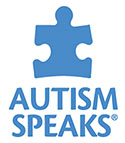What the Heck is a GMO?
One term that bounces around when we talk about food is “GMO.” So, what exactly is a GMO?
GMO stands for Genetically Modified Organism. It’s a type of biotechnology that has made itself very present in our lives whether we realize it or not. Produce that is considered to be a GMO has basically had its genetic code altered by scientists in order to get the most desirable crops. For example, making corn resistant to pesticides, or getting the juiciest tomatoes. Because genetic modification is a new area of science, not much is known about the potential health effects on humans. Because of this uncertainty, many people are choosing to opt out of GMO food altogether and buy organic produce instead.
One of the main traits of GMO crops is they have been modified to be pesticide resistant. Pesticides in crops has increased fifteen times since the introduction of GMO crops and ingredients in these pesticides aren’t necessarily safe for human consumption. In fact, according to the World Health Organization, these pesticides are “probably carcinogenic.”
Another potentially dangerous side effect of GMOs is the emergence of “superweeds” and “superbugs” which have grown resistant to traditional pesticides. In order to get rid of these, farmers have to use even more intense poisons. And so, the cycle goes.
According to the Non-GMO Project, there are 12 organisms that have the highest risk of being affected by GMOs. Those are Alfalfa, Canola, Corn, Cotton, Papaya, Soy, Sugar Beet, Yellow Summer Squash and Zucchini, Animal Products, Microbes and Enzymes, and Potatoes. Most of these crops are not only used to feed humans, but they are also common ingredients in animal feed. For instance, GMO corn is widely used to feed commercially farmed animals.
The bottom line…
We don’t know a lot about GMOs, and yet, they are everywhere. It’s best to look for foods with the “Non-GMO Project” sticker on them and buy organic produce whenever possible. Foods that are GMOs are required by law to say it on the packaging. So, spend a few extra minutes reading food labels to know and understand exactly what you’re feeding yourself, and your family.
Be Well.





